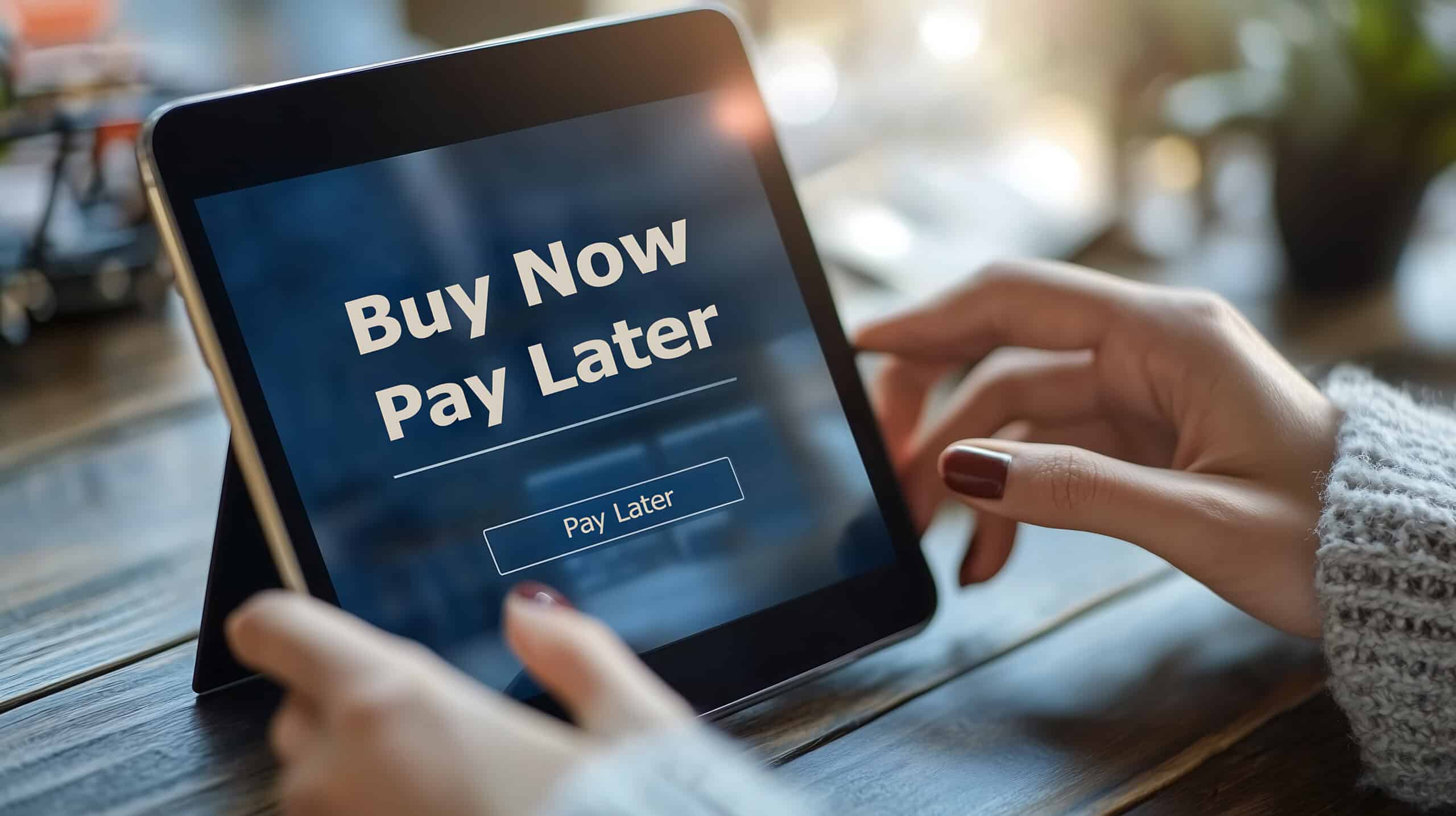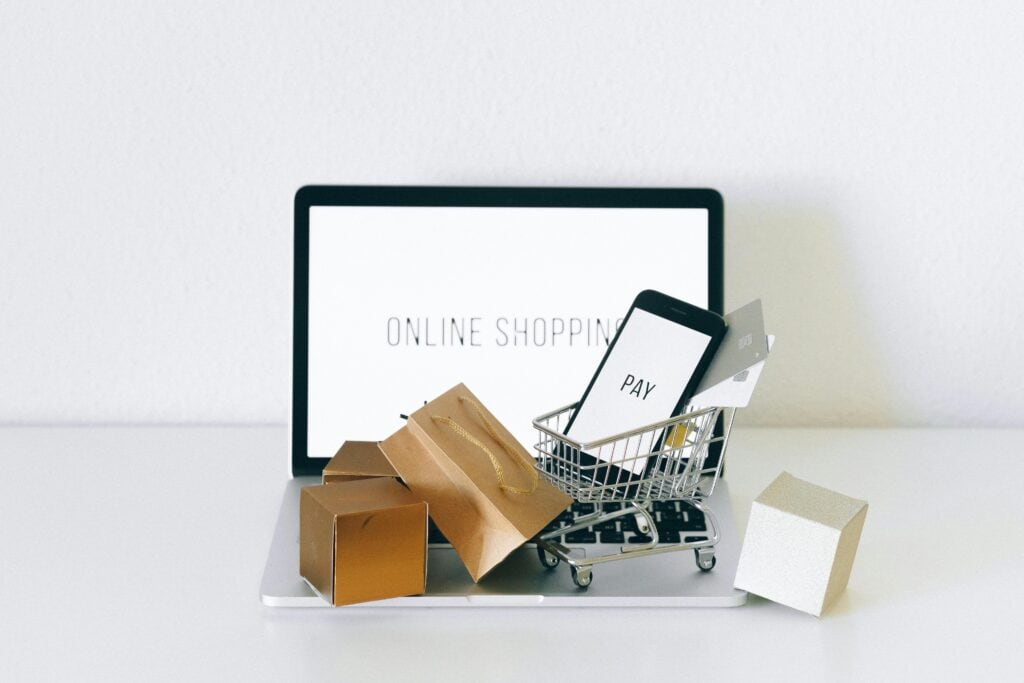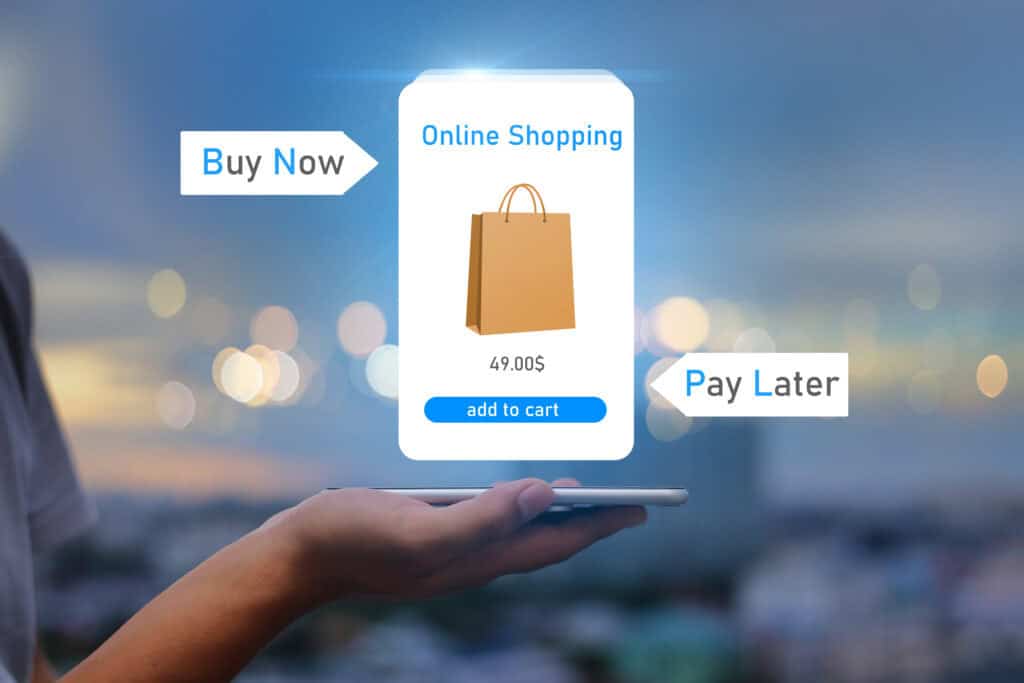
By alphacardprocess October 1, 2025
The evolution of Buy Now Pay Later services has changed everything about how online shoppers approach the process. Shoppers are showing a growing interest in alternative means of payment that let them to divide purchases into small, interest-free payments, rather than falling back on standard credit. This trend is even more pronounced in younger segments of the population who want easy planning and are interested in predictable budgeting.
There are obvious advantages for merchants to offer Buy Now Pay Later options. Offering Buy Now Pay Later as a payment option increases conversions, decreases cart abandonment and even lifts AOV with customers often feeling more comfortable making higher value purchases when the payments are spread out. And, BNPL can help improve the overall customer experience and keep consumers coming back by offering a simple, frictionless option for checking out.
However, strategic integration is critical. Looking ahead, as businesses continue to diversify and expand their payment options, choosing the right payments processor and partnering with BNPL providers that best suit their target audience and operational needs will be paramount. Buy Now Pay Later , when done right accelerates sales and builds customer loyalty for merchants at the same time, helping them to play a winning role in the increasingly flexible world of digital commerce. Let us understand more about this here.
What is BNPL?
Buy Now, Pay Later (commonly referred to as BNPL) is a form of credit that one could use to make purchases and then pay in regular installments over a pre-agreed timeframe with little or no interest. Unlike with credit cards, BNPL typically does not build revolving debt — which many consumers may find a more straightforward option. Consumers can split their purchases into two, four or more payments depending on the provider and merchant setup.
Unlike traditional credit, BNPL aims to get you approved quickly and does not require a credit check for most smaller purchases. The best part is, it takes away the obstacle of paying entirely in advance that can open it up to lots more merchants — and increase conversion rates, as well.
The most well known BNPL providers themselves are Klarna, Afterpay, Affirm and PayPal BNPL; each has its own set of terms, integrations and consumer protections. These are essentially the components you use within your payment ecosystem and tie into a merchant’s account, payment gateway, and payment processor. This way, transactions can be authorized, settled and reconciled effectively without any compromise to the security of cardholder data.
Moreover, with the addition of Buy Now Pay Later solutions to the checking out experience, businesses can offer a purchasing method that meets consumers’ changing demands for flexibility and modernity – ultimately leading to increased conversion rates and repeat custom.
BNPL Integration Options

There are several ways that retailers can incorporate Buy Now Pay Later options into their checkout process, which allows for flexibility in implementation depending on operational requirements and customer preferences.
- Hosted BNPL Checkout Pages: This option visits the BNPL provider’s page for approval and payment. It helps minimize merchants’ integration effort while minimizing their PCI compliance scope as sensitive payment data is transmitted to the provider.
- API-Driven Integration: A streamlined experience, API-driven integration integrates BNPL directly into the merchant’s checkout process. The customer does not leave the site and in the background, the BNPL process is approved. This process guarantees minimal impact, brand consistency, and overall improvement in the user interaction.
- POS Integration: Merchants have an option of integrating BNPL into their physical point-of-sale mechanisms for customers to use in-store. This lets shoppers leverage installment options when buying in a store, and creates a seamless payment experience across online and offline.
- Mobile App Integration: BNPL integration in the apps of such ‘mobile first’ retailers is highly beneficial. Shoppers can choose BNPL at checkout, see installment plans and agree to receive notifications on upcoming payments without leaving the app.
- Hybrid: Some online and most in-store and mobile payment options work effectively for merchants by providing a consistent BNPL experience across the channels. This approach caters to omnichannel consumers and optimizes conversion opportunity.
The appropriate integration is determined by a mixture of technical feasibility, customer experience and operational efficiency. Whichever the method, BNPL solution integration needs to be frictionless with current payment processors and gateways for easy authorization, settlement, and reconciliation.

Technical Considerations for Buy Now Pay Later Integration
A successful integration of BNPL services will depend on tackling a mix of technical considerations to deliver a smooth customer experience and strong backend systems.
- Compatibility: Confirm that BNPL services are compatible with your payment processor and gateway. This minimizes back-office disputes in the authorization and settlement process.
- API Documentation & Sandbox Testing: Go through the APIs provided in detail and test transactions using sandboxes. It helps in identifying mistakes, streamlining the process and modelling different scenarios such as rejections, refunds or part payments.
- Order Management: BNPL fulfilment must handle order with accuracy including refunds, cancel and part payment. With auto-sync enabled between BNPL systems and your webshop, you can eliminate manual reconciliation and operational errors.
- Live Authorization: Real-time approval flows are crucial to keeping your conversion rates strong. BNPL providers must provide instant risk assessment, so merchants can show customers financing options instantly.
- Mobile friendly: Lots of customers will add items to their cart on a smartphone. BNPL input may bring with it fast and responsive mobile checkout, hopefully sidestepping the slow load times that contribute to abandonment.
- Error Handling & Notifications: Have clear error messages for declined BNPL transactions and instantly notify customers of what to do next. This is a move towards transparency, and trust.
- Security & Compliance: Ensure that all transactions comply with PCI DSS standards. Sensitive data should be tokenized or handled entirely by the BNPL provider to minimize risk.
With some of these technical considerations sorted, businesses can provide a seamless experience for those using Buy Now Pay Later without disruption, increase conversions and workflow efficiencies as well as ensure the security and privacy of their customer data.
Compliance, Security, and Risk Management
Security and compliance are very important as BNPL is integrated in order to protect consumers, merchants and the payment ecosystem as a whole.
- Data Security: All BNPL should comply with requirements such as PCI DSS for all transaction. Tokenization and encryption protect cardholder data online, in the store or on mobile.
- Consumer Protection Laws: Many BNPL lenders adhere to consumer financial laws (i.e., the Truth in Lending Act or CFPB guidelines in the US) which require them to disclose the fine print around repayment terms and fees. The schedule of payments and full cost have to be presented by the merchants openly so that they don’t run into regulatory trouble.
- Fraud Prevention: Fraud mitigation is critical for BNPL, particularly because of card-not-present transactions. Providers leverage risk scoring, identity verification and machine learning to identify fraudulent on-writing. Traders should adopt these tools and watch for any suspicious behaviour.
- Chargeback Management: Although BNPL providers are themselves on the hook for a portion of repayment risk, disputes or fraudulent transactions can still take place. Set strict policies for returning chargebacks, credits and adjustments.
- Transparent Communication: Make BNPL terms transparent to customers, both at checkout and in confirmation emails. Openness increases trust and helps avoid conflicts or delays in payments.
By implementing these best practices for compliance, security and risk management, merchants can safely provide Buy Now Pay Later while earning customer trust and remaining regulatory compliant.
UX and Design Best Practices for Buy Now Pay Later
User experience (UX) is key for getting the most from BNPL adoption and conversions.
- Clear Communication: Clearly show BNPL choices on product pages and in the basket area. Let customers know what their installments and totals will be, along with how long they have stood interest-free for themselves.
- Large Cost Display: Clearly show the total amount of purchase cost and take installments. Transparency contributes to user trust in the service and alleviates checkout hesitation.
- Reduce additional clicks: Don’t redirect customers to unnecessary pages or approval steps. Streamlined workflows enhance conversion rates.
- Seamless Approval Status: BNPL should approve in the background without impacting checkout. API compatibility enables instant verification and an uninterrupted shopping experience.
- Support & FAQs: Links to details about terms of payment, late fees and how BNPL works should be readily available. The more customers know about the terms, the likelier they are to use BNPL.
Following these UX principles will help merchants to ensure the highest possible uptake of BNPL as it drives conversion rates and increased customer satisfaction in general.
Marketing BNPL to Boost Conversions
Promoting Buy Now Pay Later effectively can significantly enhance adoption and conversions.
- Point-of-Sale & Online Banners: Feature BNPL options in a prominent place at checkout, on product pages, and your marketing materials for greater visibility.
- Tailored Offers: Reach segments favored to adopt BNPL, including new customers, younger consumers and high-value spenders. Custom messaging encourages engagement.
- Limited time offers: Promote BNPL offers during seasonal promotions or sales to create urgency and increase order value.
- Product Cross-Selling & Upselling: Display BNPL as products to purchase along with a related or compatible product. An instalment option, which encourages customers to spend on add-ons.
Merchants who promote BNPL can promote awareness, adoption, revenue and the customer experience.
Measuring Success and KPIs

It is important to track the performance of Buy Now Pay Later integration to get the best results. Key performance indicators (KPIs) include:
- Conversion Rate: Track the frequency of customers selecting BNPL over other payment options.
- Average Order Value (AOV): Monitor if installment options increase overall purchase size.
- Repeat Purchase Rate: Assess if the consumers who use BNPL coming back to make a repeat purchase.
- Adoption Rate: Track the percentage of eligible customers opting for BNPL.
- Declined Applications: Analyze reasons for declined BNPL approvals to refine the customer experience.
- Cart Abandonment: Compare abandonment rates before and after BNPL implementation to evaluate impact.
- Revenue Impact: Assess total sales growth attributed to BNPL usage.
- A/B Testing: Experiment with placement, messaging, and call-to-action buttons for BNPL offers to optimize engagement.
Through tracking these KPIs, retailers can fine-tune Buy Now Pay Later approaches to maximize conversions, grow revenues and improve customer experience.
Common Pitfalls and How to Avoid Them

However, there are also pitfalls to Buy Now Pay Later if used incorrectly:
1. Overcomplicated Checkout: Presenting numerous BNPL providers can be confusing for shoppers. Stick to one or two trusted sources and keep the entire interface simple.
2. Lack of Customer Education: Shoppers could be unclear on repayment conditions. Show clear payment plans and faqs to let people know what to expect.
3. Neglecting Fraud Prevention: BNPL transactions, online specifically, can be risky. Utilize provider risk scoring and monitoring solutions.
4. Ignoring Mobile Optimization: Shoppers make purchases through their phone. Make sure that B2B site integration is completely mobile-friendly for frictionless in-app or mobile web checkout.
5. Poor Reconciliation: Mis-recorded payments can lead to accounting headaches. Facilitate the connection of BNPL transactions to your payment processors for reconciliation and settlement.
Avoiding these pitfalls ensures that BNPL integration enhances conversions, customer satisfaction, and operational efficiency.
Conclusion
Buy Now Pay Later has emerged as a game changer for online and in-store sellers – providing the kind of convenience and flexibility consumers want while boosting conversions, raising order values and enhancing customer loyalty. Seamless integration, be it via hosted pages, embedded API or POS systems and mobile apps make the experience a consistent one no matter where sales are taking place.
In order for BNPL to be effectively deployed, it must also meet technical standards regarding compatibility with current payment processors and real-time authorization, responsiveness and security when considering the handling of data across different mobile devices. Security and compliance, including PCI DSS (Payment Card Industry Data Security Standard) support, tokenization, and fraud prevention solutions offer peace of mind for merchants and consumers contended to trust the transaction process.
Finally, Buy Now Pay Later is more than just a payment method – it serves as a strategic enabler to optimize the shopping experience, improve the operational efficiency and fuel healthy business growth.
FAQs
1. What is Buy Now Pay Later?
BNPL is a payment option that allows customers to split purchases into multiple installments, often interest-free, instead of paying the full amount upfront.
2. How does BNPL integration work with existing payment systems?
BNPL integrates via hosted checkout pages, APIs, POS systems, or mobile apps, connecting seamlessly with the merchant’s payment processor and gateway for secure authorization and settlement.
3. Is BNPL safe for merchants and customers?
Yes. Providers adhere to PCI DSS standards, tokenize payment data, and implement fraud detection tools to minimize risk while ensuring secure transactions.
4. Can BNPL increase sales and customer loyalty?
Absolutely. BNPL reduces friction at checkout, increases average order value, appeals to younger consumers, and encourages repeat purchases through a convenient, flexible payment experience.
5. What are common mistakes to avoid with BNPL?
Merchants should avoid overcomplicating checkout with multiple providers, neglecting mobile optimization, failing to educate customers, and poor reconciliation with existing payment systems.